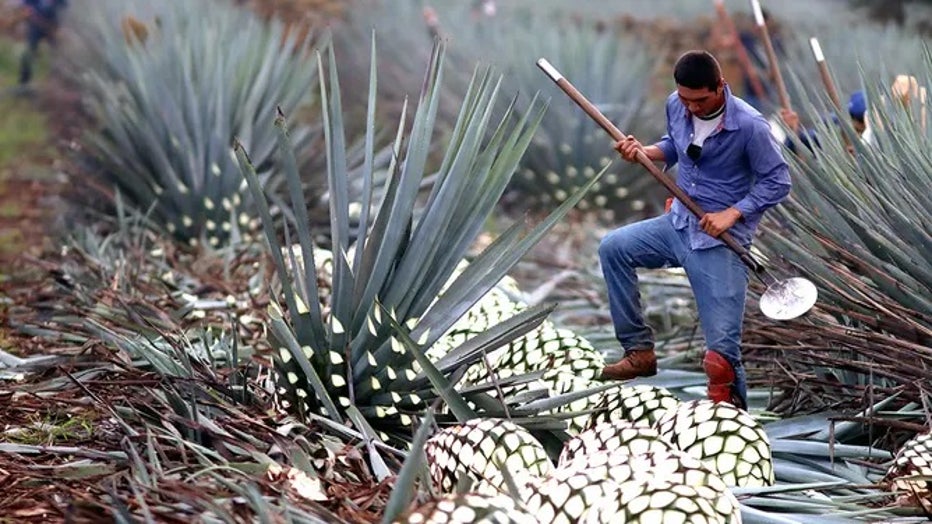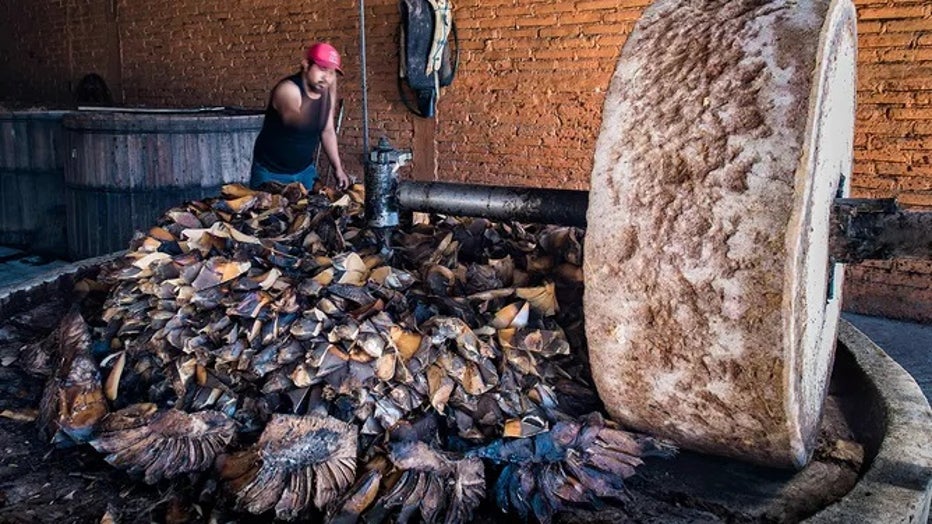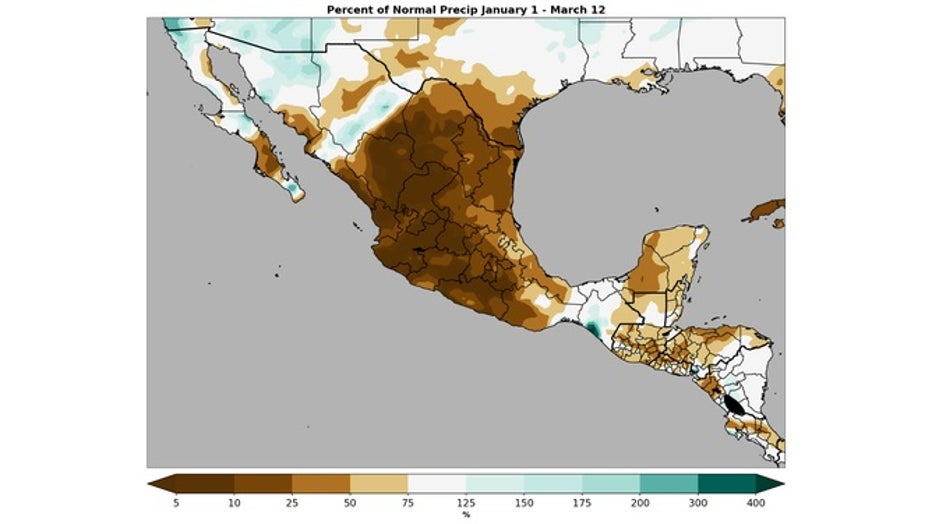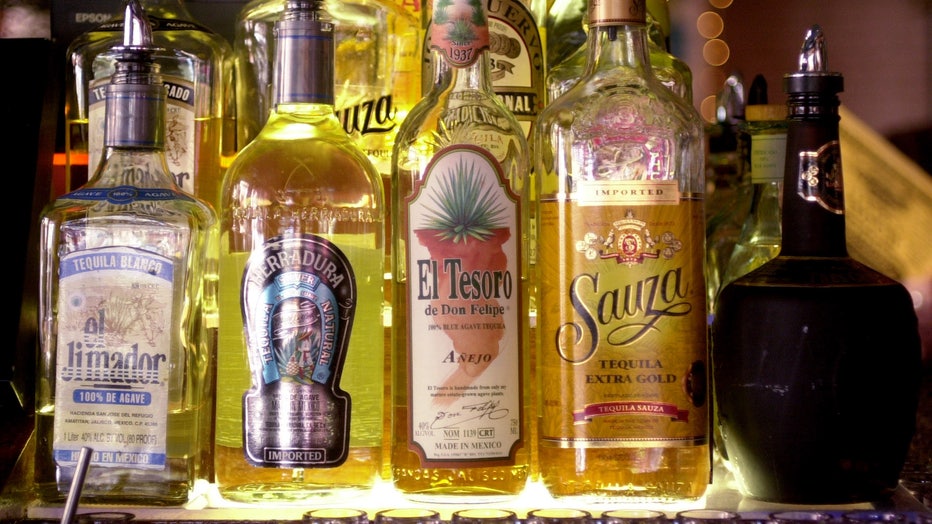Potential tequila shortage could impact your next margarita due to Mexico's extreme dryness

A shot of tequila is poured September 28, 2000 at La Hacienda in El Paso, Texas. (Photo by Joe Raedle/Newsmakers)
Is tequila on the rocks? The next time you order a margarita, you might be holding back more than the salted rim.
Extreme weather during the past few years in Mexico and other areas of the world has hurt crop production of the base and main ingredient in tequila, according to Everstream Analytics' chief meteorologist Jon Davis.
"At a time when large agave crops are needed to meet demand, the extreme weather in Mexico is increasing the problems and the potential for scarcity of the product," Davis said.
The succulent crop can withstand a great deal of stress from drought. However, when conditions are this extreme, even a crop like agave suffers, Davis adds.
HOW TO WATCH FOX WEATHER ON TV

A Jimador (person who works on the agave plant) cuts an agave plant to extract the pineapple used to make tequila in Tequila, Jalisco state, Mexico, on July 23, 2021, amid the International Tequila Day. (ULISES RUIZ/AFP / Getty Images)
The agave crop has been grown for centuries in tropical regions of the world but native to Mexico. Davis said when the agave is harvested, the sap is extracted and used to produce pulque, which is the base ingredient for mezcal (or tequila). The largest agave producer in the world is Mexico, and it is grown across most of the country, except for the country's northwest states.
"Global demand for tequila has been on the high side during the past few years, which has increased the need for large agave harvests to fulfill demand," Davis said.

Third-generation master "mezcalero" Rogelio Mateo chops up "Espadin" agave hearts - known as "piñas" because they look like large pineapples - in the "tahona" or grinding mill, prior to the fermentation process used to make mezcal, on February 24, 20
Will the agave crop production improve anytime soon?
The issue currently in Mexico is extreme dryness, according to Davis. The bulk of the country has had an extremely dry winter along with well above normal-temperatures.
The map below depicts the percent of normal precipitation this year (Jan. 1 – March 12). Most of the country has had well below normal-precipitation.

Here's a look at the percent of normal precipitation in Mexico from Jan. 1 – March 12, 2023. (Everstream Analytics)
"Precipitation totals across much of the country have been less than 25% of normal with large sections having totals less than 10% and 5% of normal," Davis said. "These are extremely low, and in many cases, record-setting over this long of a period – two and half months."
The exception to the dryness has been in the northwest sections of the country, like in Baja California, which is not major producing areas for agave in Mexico.
Davis said the extreme dryness has been accompanied by well-above-normal winter temperatures, especially in one southern Mexico town, which is a major agave growing area.
SNOWFALL CONSIDERED CRUCIAL FOR LONG-TERM DROUGHT MITIGATION

Rows of tequila bottles are on display (Photo by Chris Hondros/Newsmakers)
"An example of the extreme heat occurred in late February (Feb. 27) when Puente Mezcal reached a high temperature of 110.5 degrees," Davis said. "This was the hottest temperature in the Northern Hemisphere during the month of February."
The combination of extreme dryness and unusual winter warmth has depleted soil moisture reserves and intensified the drought across Mexico, according to Davis.
Looking ahead, Davis said there is no indication of any improvement in the situation as the dry pattern continues into the spring.

